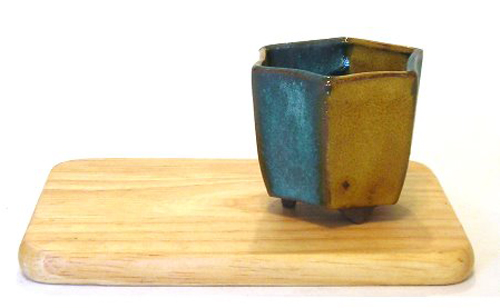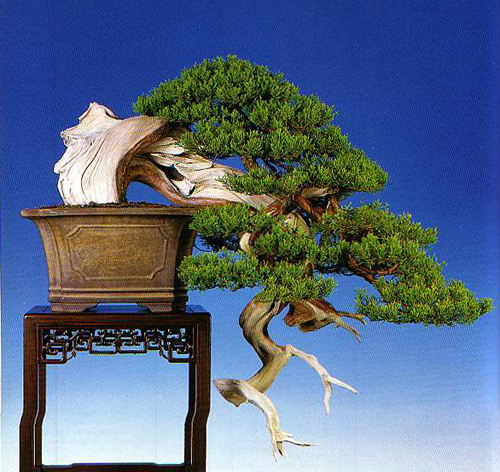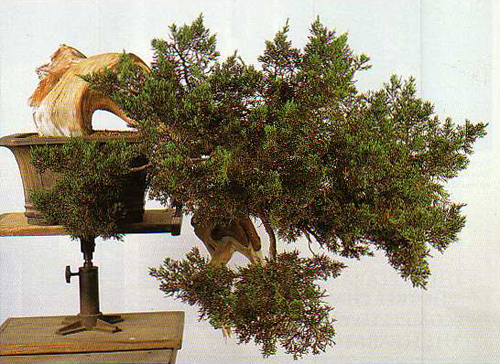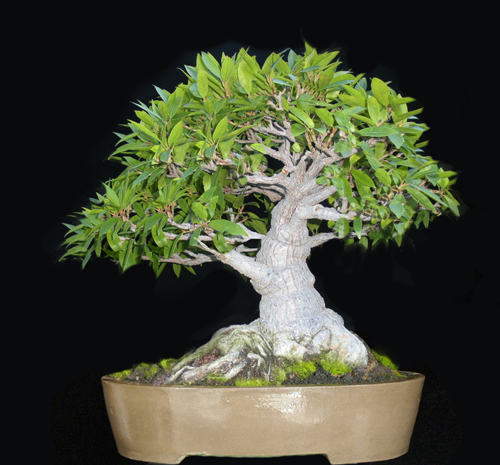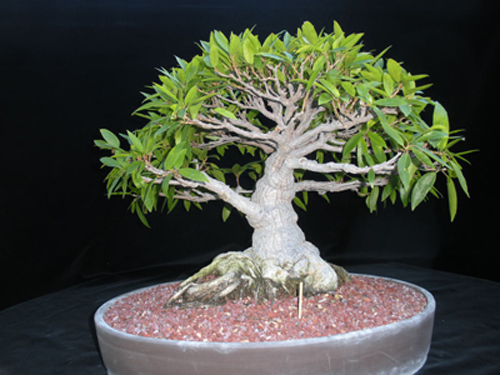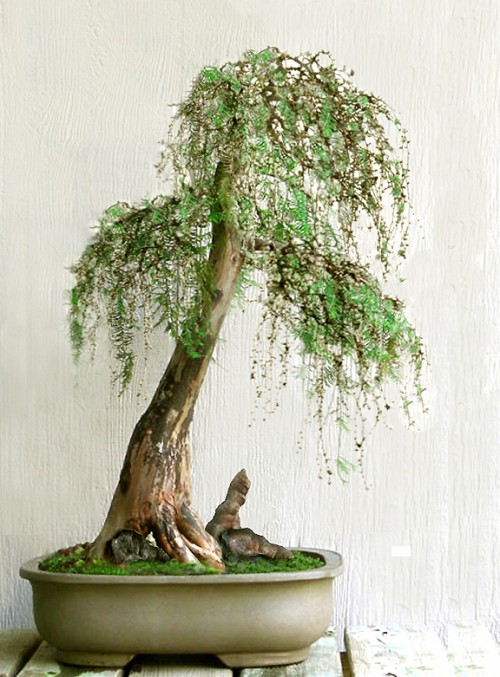
Robert Steven’s simulation of a Bald cypress that was submitted by Mac McAtee (see below for Mac’s original).
It will cost you absolutely nothing (except maybe a little pride)
Email us a photo of your bonsai and we’ll submit it to Robert Steven for a critique. Robert is a world renowned bonsai author, teacher and artist (you could say bonsai master, but I tend to shy away from using the term) and we are delighted to be the recipients of his generous offering of his time and expertise (how’s that for a string of prep phrases?). Normally you would pay handsomely for such detailed advice from a bonsai artist of Robert’s status.
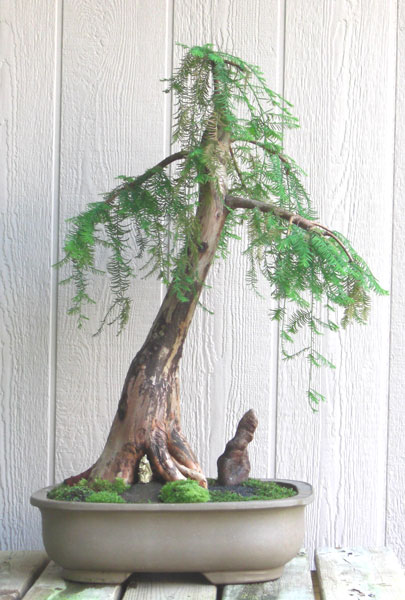
This is the photo Mac submitted.
Robert’s critique
I always emphasize the importance of ramification (branching), no matter the style of the tree; good ramification makes a bonsai look like a mature tree in nature.
There are some styles that need specific ramification structures if you want them to resemble trees in nature e.g. windswept and weeping style.
This bonsai looks like a dying tree rather than a weeping tree (sorry); simply because of improper ramification. The main branches are too stiff and too straight; something you’ll never find on weeping trees in nature.
The main branches should show curving lines along with more secondary branches and twigs. All of these should the same lines; that is, growing upright before bending down to weep. This is especially true on the top of the tree. In almost all cases, weeping trees have rounded rather that narrow tops.

Detail that shows ramification on a weeping tree.
My next comment is about the rock. It looks separated from the tree which expresses a lack of unity. You could rearrange with few more rocks in an over-lapping manner. This will enhance the poetic nuance….
There is more than one way to design any bonsai and my critiques and recommended solutions might not always fit your taste because of personal preferences. But I always try to give my opinion based on artistic and horticultural principles.
To understand my concepts better, please read my books Vision of My Soul and Mission of Transformation which are available at Stone Lantern.
You can also visit my bonsai blog.
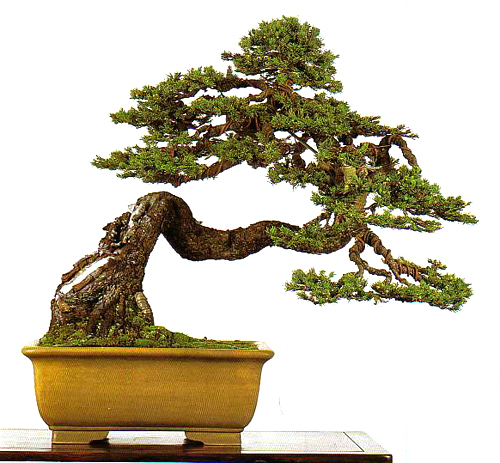
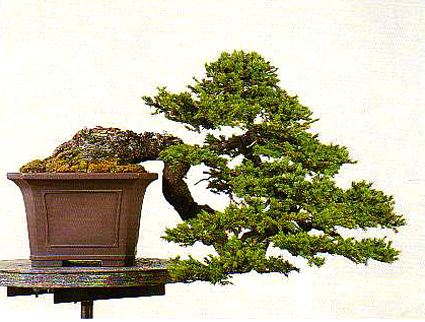 Before. With a little wiring and a little trimming, you could leave it as it is and still have an exceptional bonsai.
Before. With a little wiring and a little trimming, you could leave it as it is and still have an exceptional bonsai. 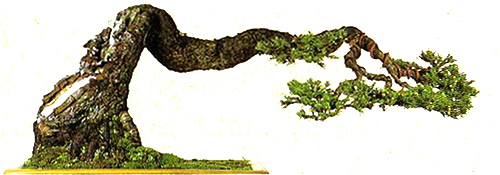
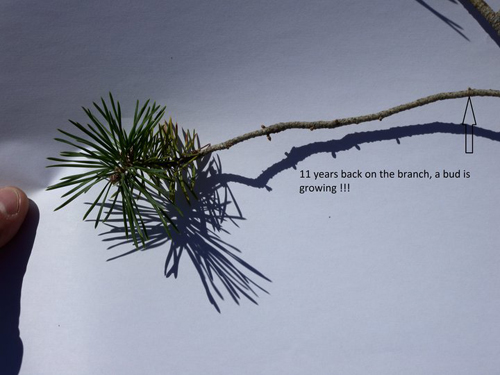

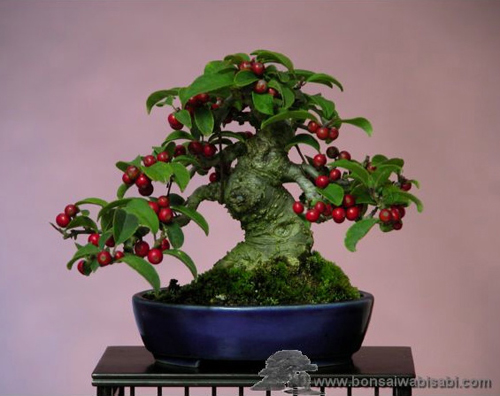
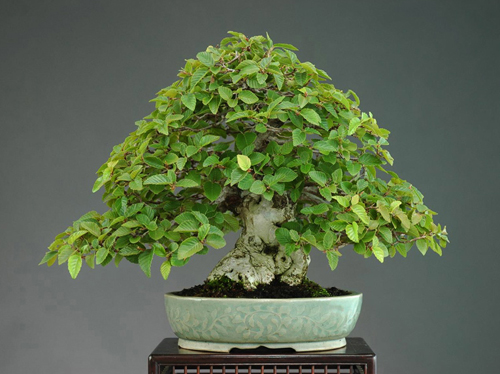
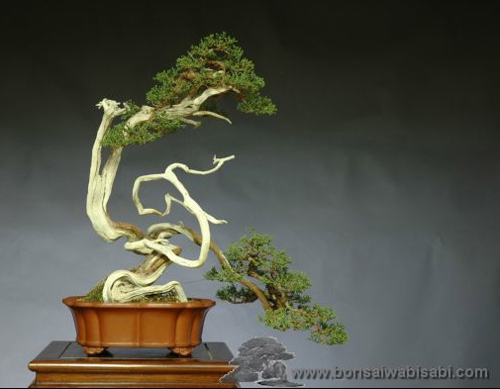
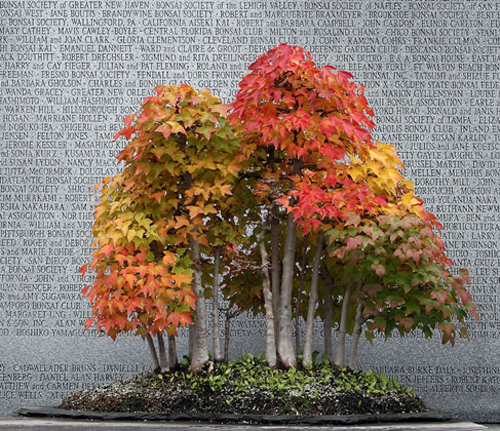
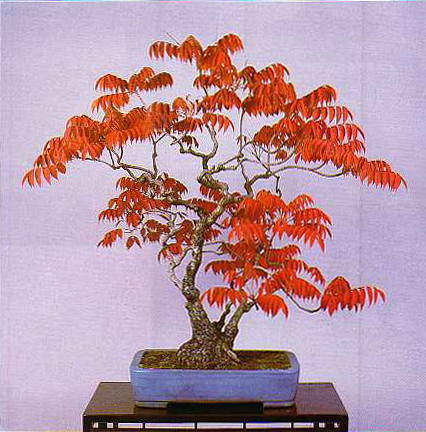
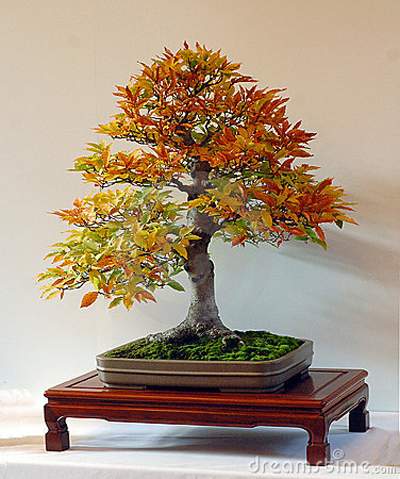
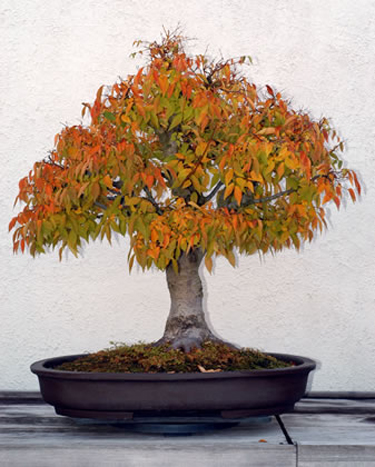
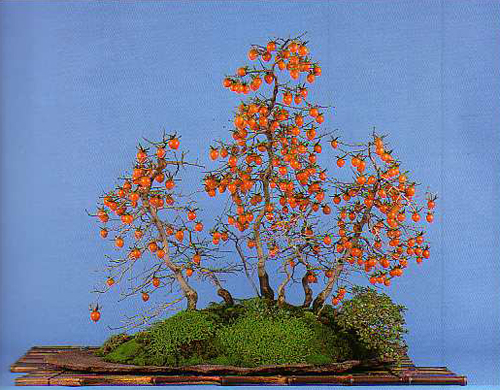
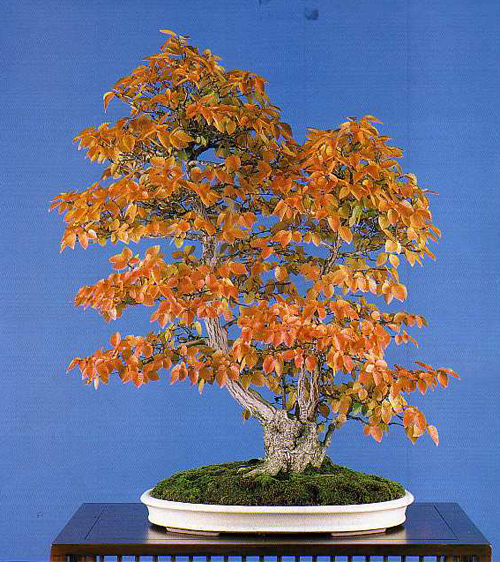
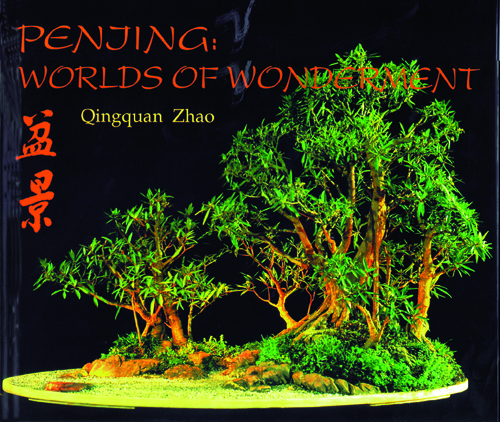

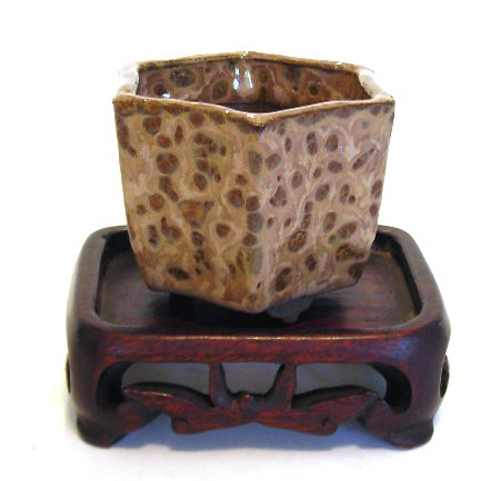 I’m not sure I’ve ever seen a glaze quite like this one (or the one below for that matter). The potter is Michelle Dougherty.
I’m not sure I’ve ever seen a glaze quite like this one (or the one below for that matter). The potter is Michelle Dougherty.